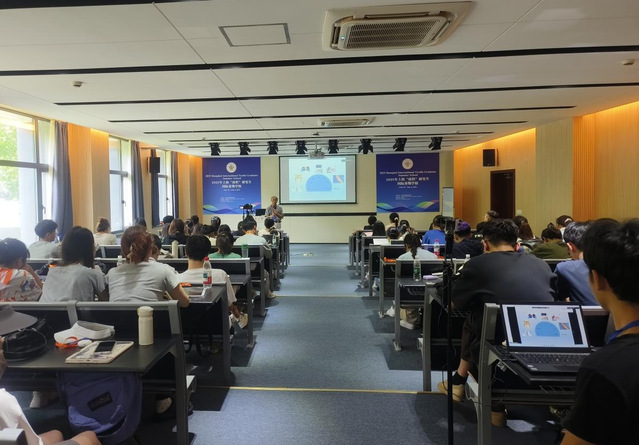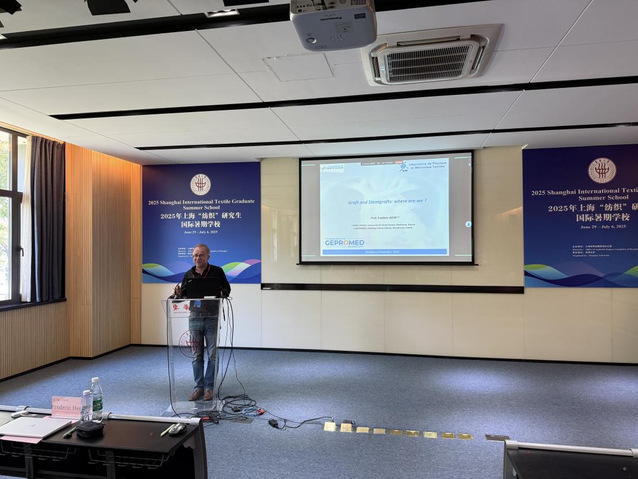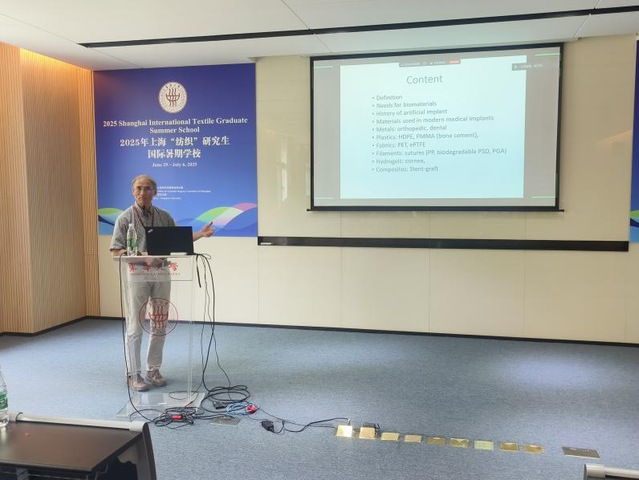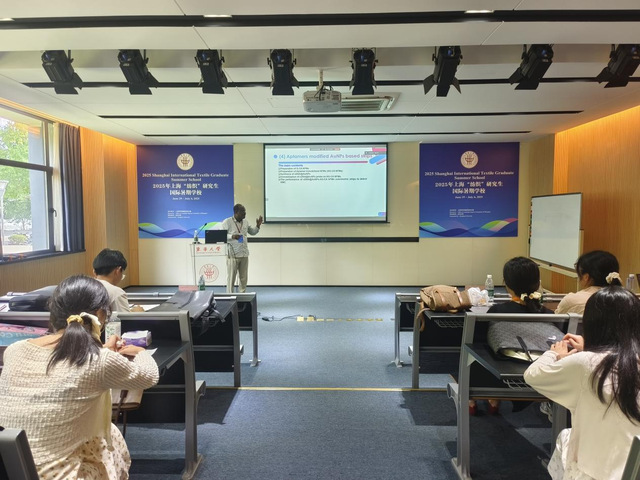2025 Shanghai International Textile Graduate Summer School Teaching Briefing
Issue 1 June 30, 2025 E-mail: fzsqxx@dhu.edu.cn
2025 organizing committee of Shanghai Textile Graduate International Summer,
written by: Han Qi
On June 30th, the 2025 Shanghai Textile Graduate International Summer School officially kicked off. On the first day of the event, Professor FREDERIC HEIM, Professor ZE ZHANG, and Abedalwafa delivered excellent academic reports, bringing the latest advancements in cutting-edge textile technology to the participants.

(Classroom scene)
Professor Frederic Heim discussed the crucial role of cardiovascular grafts and stents in treatment. Due to the existing problems such as poor flexibility and easy weariness of the current cardiovascular stents, Professor Frederic Heim's team proposed a new concept of discontinuous structure, combining flexibility, high strength and porosity to better meet the vascular requirements. His research team adopted the mixed weaving technology, combining a high-strength woven structure with a non-woven layer that promotes tissue growth, and used electrospinning nanofiber technology to optimize performance. In clinical tests, the PLLA/PCL stent (25 cases) and the PCBU material (5 children) have shown good results.

(Professor FREDERIC HEIM)
Professor ZE ZHANG, in his presentation titled Introduction to Biomaterials and Medical Implants, first clarified the key differences among Biomaterials, Biological Materials and Materials Produced by Human Cells. Through historical cases, he systematically demonstrated the evolution of biomaterials from early aluminum and copper test metals to modern cobalt-chromium alloys and titanium alloys, and highlighted medical polymers such as PMMA (contact lenses) and silicone elastomers (breast implants). The presentation also shared the design principles of orthopedic implants and vascular stents, as well as cutting-edge technologies such as plasma surface treatment.

(Professor ZE ZHANG)
Abedalwafa innovatively developed a colorimetric sensor strip based on electrospun nanofibers to address the issue of antibiotic abuse. Compared with traditional methods such as mass spectrometry and fluorescence detection, this technology has the advantages of simple operation, low cost, rapidity and efficiency. The research team utilized the high specific surface area and porous characteristics of nanofibers to develop four new types of test strips: 1) Nickel ion immobilized test strip for detecting oxytetracycline; 2) Iron ion immobilized test strip for detecting tetracycline; 3) Gold nanoparticle assembled test strip for detecting metronidazole; 4) Aptamer modified test strip for detecting kanamycin. This technology achieves visual detection through color changes and is particularly suitable for primary medical care and rapid on-site screening, providing an innovative solution for public health safety monitoring.4. Kanamycin colorimetric test paper based on Apt@AuNPs GCA nanofiber membranes. For these four projects, he elaborated on the experimental objectives, mechanisms, colorimetric theories, and material preparations from several aspects, providing a comprehensive introduction to the cutting-edge direction of colorimetric detection methods to the students.

(Doctor Abedalwafa)
It is reported that the Textile Graduate International Summer School in Shanghai has been held for 14 consecutive years since 2025. This year's event will last for 8 days and feature nearly 20 academic lectures. Renowned experts and scholars from multiple universities will give passionate lectures and presentations. More than 100 master's and doctoral students from over 20 sister universities across the country and abroad will participate in the learning through online and offline methods.

